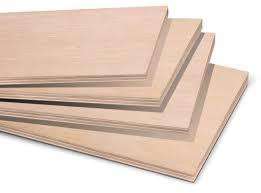We have all the wood you need, whether you’re building a house or finishing a DIY project like creating a bookcase. It can be challenging to select the best wood for a project; nonetheless, I believe eucalyptus plywood is an excellent choice for you at this time.

What you need to know about plywood
There are numerous varieties of plywood, each with a variety of applications. Floors, roofs, and walls can all be supported by plywood panels. Chipboard is a different kind of reconstituted wood that is created by combining sawdust with a binder. It won’t warp like plywood does, but it can swell if exposed to dampness. Chipboard is frequently used for countertops, as a lining for furniture, and as a substrate for furniture.
For outside building, exterior plywood is built of waterproof glue. It can be used for siding and flooring.
Facts on eucalyptus plywood
A common hardwood kind in Vietnam and China’s Guangxi Province is plywood. These core veneers are appropriate for making film faced plywood and plywood for furniture. When compared to poplar softwood plywood, its quality is superior. Around the world, eucalyptus plantations cover an area of 8 million hectors. It thrives in poor soil and develops quickly in humid conditions. Some species can grow to a height of 35 meters after seven years.
Description: The hue of red eucalyptus is a rich red. The wood is frequently figured Bees wing designs are the most common figure form, while burl and curling grain are also common. Pink eucalyptus has a stunning pink hue that is almost indistinguishable from pink ivory, which is highly sought and pricey. The same figure formations may also be seen in the pink eucalyptus.
Mechanical characteristics: Eucalyptus is a highly thick and strong wood, but it is also rather delicate and has a low shock resistance. Due of the eucalyptus’ propensity for cellular breakdown, surface checking and drying deformation are both rather frequent. The durability grade for the wood is average.
Working characteristics: Although relatively dense, the wood cuts easily. Although the wood is check-prone, it is excellent for wood turning, thus caution is required. For optimum effects, rough out oversize, let season, and then complete turn. The wood will warp as it cures. Amazing furniture can be created when it is kiln dried. To create material with live edges that was book-matched, we flitch sawed our logs completely through. By doing so, you would be able to build a single piece of furniture from a single piece of wood, giving it a charming consistency of color and figure.
Eucalyptus Plywood production is used
After steaming eucalyptus logs at 60 to 70°C for 20 hours, they were chopped with circular saws. The veneers are roughly 2.6 mm thick. Using a veneer dryer, veneers were dried to a moisture level of 4–6%. In order to create plywood, 300 g/m2 of urea-formaldehyde (UF) resin was spread across the veneer layers by a glue spreader.

China eucalyptus plywood veneer core
Since it denotes the type of plywood’s core, eucalyptus plywood is not a specific sort of plywood in mainland China. Malaysia may be used for both the plywood’s front and back. Tropical hardwood or hardwood Other expensive-looking hardwoods include okoume, bintangor, and meranti (Red Canarium). Eucalyptus is also used to make film facing plywood, in addition to commercial and furniture plywood. Some customers who prefer combi core will choose pricey hardwood plywood constructed from hardwood veneers (a combination of poplar and eucalyptus).
Manufacturers of film faced plywood claim that poplar wood veneers rather than eucalyptus are typically required for the face and back of hardwood plywood. Poplar makes laminating with thin veneers or phenolic coated film more simpler.
Must I buy eucalyptus plywood?
The most commonly used premium grade plywood for furniture and formwork is eucalyptus. It is of good quality yet more expensive. If your projects have stringent requirements, eucalyptus plywood core is the best option. Alternatively, pick poplar.
What makes eucalyptus plywood important?
Eucalyptus is most frequently associated with its medical benefits when people talk about it. Long used as a tick repellent as well as a remedy for asthma and nasal congestion, eucalyptus oil has several health benefits. It is also used as a herbal treatment for skin ulcers and rheumatoid arthritis.
However, the eucalyptus tree’s wood has received little attention. Although the color of this lovely wood can range from a deeper reddish tint to the color of sand, it resembles teak in appearance. Teak has been successfully replaced by eucalyptus wood in outdoor furniture and hardwood flooring. However, the woodworking sector has been sluggish to accept it.

Eucalyptus flywood and wood have not been widely used since it is difficult to dry the wood. Eucalyptus has an extremely high moisture content when it is harvested, which causes the wood to warp, twist, and crack readily when dried. The wood needs to be cured as quickly as possible. Much of the wood becomes useless for building, making furniture, and other woodworking purposes if it is not dried properly. The Forest Research Institute in Dehra Dun, however, has created a novel cutting technique called “radial sawing” that produces far more usable lumber from eucalyptus logs.
The eucalyptus family, which includes more than 700 different species of trees and shrubs and is mostly found in Australia, is not just one type of tree. In the 1850s, it was shipped from there to the United States and planted in California in preparation for a lumber crisis that never materialized. Eucalyptus trees of all varieties grow quickly, which makes it a very sustainable wood to utilize.
Eucalyptus trees are grown on extensive farms in China, where the majority of eucalyptus plywood is produced. Unlike many other hardwoods, trees can be harvested in as little as 35 years. This makes it a good replacement for poplar as the material for the core plies in hardwood plywood given recent improvements in the processes for cutting the wood. The face and back veneers of eucalyptus plywood can be constructed of different hardwoods, and the core is composed of eucalyptus wood. Eucalyptus plywood can be polished in a variety of ways. Eucalyptus core plywood is slightly darker and heavier when compared to poplar core plywood. Stronger plywood results from the wood’s higher density.

Hardboard, which is sold by Home Depot, is likewise manufactured from eucalyptus wood. For tempered boards, the higher wood density works well, producing a more durable product. The wood’s natural oils aid in its ability to fend against insects and deterioration. The wood has a natural resistance to water and won’t rot if it gets wet.
Eucalyptus is a sturdy wood, although it has a tendency to break easily and has a low shock tolerance. Additionally, due to variations in temperature and moisture content, it has a propensity to expand and contract more dramatically than other species of wood. In cold climates, eucalyptus is not a recommended wood, especially for outdoor use. In warmer climates, it is mostly employed for outdoor applications. Furniture, fencing, millwork, paneling, and support beams all contain it.
Teak is frequently swapped out for eucalyptus wood while making furniture. Because there are more trees available and they grow more quickly, prices are cheaper while still getting similar-looking and durable wood. One might anticipate that properly completed outdoor furniture constructed of plywood or eucalyptus wood will last 25 to 30 years. But if the wood is not well cared for, it will deteriorate and turn a pale gray color. By sanding and oiling faded wood, its original beauty can be restored.
In the US, eucalyptus plywood might be hard to come by. It costs about the same as domestic hardwood plywood when it’s available. The price of shipping is typically more expensive than the price of the plywood itself. Eucalyptus turning blanks and slabs, some even book-matched for creating excellent furniture, are nevertheless easily accessible.
Eucalyptus is not difficult to mill, but when utilizing it, you should be aware of its susceptibility to moisture. Before utilizing the wood, give boards some time to adjust to the temperature and humidity in the workshop to prevent shrinking issues. When completing tasks, make sure to thoroughly seal the cut ends of the pieces to lessen the wood’s capacity to absorb moisture.
I hope this article is relevant and useful to you. Hope the above is what you are looking for. Thanks and have a nice day.
